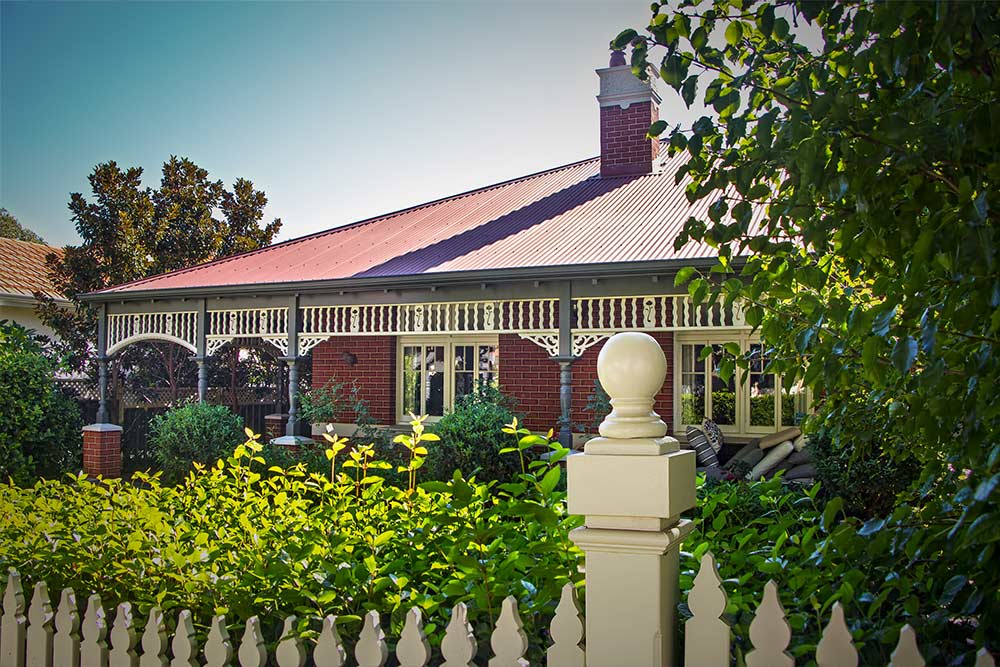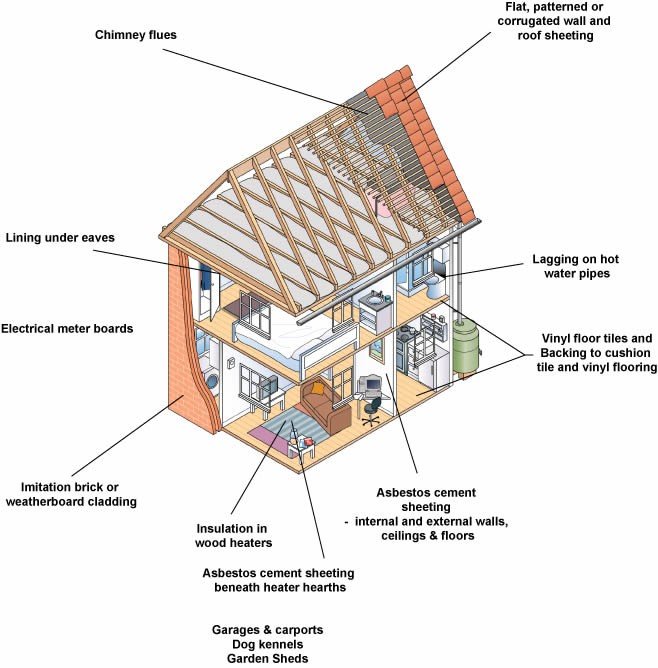
04 Nov Key Considerations for Renovating your 1940s-1960s Home
It’s easy to fall in love with a period home property, the high ceilings, open fireplaces, stained glass windows, fancy ceiling roses, intricate cornices, architraves and skirting boards hark back to a by gone era where quality craftsmanship was the order of the day.
Rejuvenating an older home can yield stunning results, but owners looking to embark on the process should do so with eyes wide open, as renovating these older homes can be fraught with challenges that at times need deeper pockets than when renovating a modern home.
If you do own a period property from the mid 1900’s or are looking to purchase one to renovate and possibly extend, here are my thoughts as an experienced building contractor.
First and foremost, I’ll state the obvious you will be dealing with an old dwelling, in some cases close to a hundred years old if it’s a Colonial, Victorian or Federation era building. Without stating the obvious, this means that many things (most things) have likely seen better days.
It also means that the home may have been built at a time before electricity, gas and running water was available, and so these utilities have been gradually added in subsequent years – to what quality level remains an unknown until qualified trades can take a look to see if the building standard at the time still stacks up today.
Health & Safety – Asbestos
When renovating a property form the 40’s 50’s and 60’s, care should also be taken to correctly handle old building materials that could potentially be harmful; the most known about is asbestos.
Unfortunately, asbestos usage was rife in housing construction throughout the 1900’s, eventually tapering off in the early 90’s before the eventual ban of asbestos usage in December 2003. If you’re inexperienced in dealing with asbestos removal, you most definitely need to continue reading before removing any potential asbestos materials from your house.
If you’re scratching your head wondering why Asbestos was used, it was simply because it has excellent resistance to heat and chemicals, so it gained wide spread usage through housing materials, especially insulation.
The image below depicts which parts of your house may contain (there could be many more) asbestos, that is if your house is pre 1990 and hasn’t be renovated.

If you decide to take the DIY route, its best to follow these safe removal steps to ensure you stay safe.
Additionally, NSW only permits up to 10m2 of DIY asbestos removal, and it is still advised that you outsource the task to a licenced contractor.
The main danger of asbestos is when it breaks down naturally or is sanded, which frees harmful fibres, usually when handling friable asbestos (particles of asbestos that can easily be reduced to powder by hand) is the risk of breathing in these particles. Asbestos particles can cause deadly respiratory diseases.
For the novice, it can be especially difficult to even identify asbestos as its appearance is like cement sheeting. My advice is to consult a professional and avoid the headache and exposure to harm during your renovation.
Health & Safety – Lead based paint.
If the property being renovated is a weatherboard, it’s 100 per cent certain that it was painted using lead-based paints. Exposure to lead in paint including paint dust, flakes or fumes can have negative health effects on everyone, but especially in young children and pregnant women.
You can test for lead in paint by using a colour change test kit or preferably, with a portable XRF (X-ray fluorescent) machine.
If lead is detected, precautions need to be taken and it’s recommended that a professional painter is engaged who will use the correct personal protection equipment and employ the safest methods to either completely remove the lead paint or prepare it for painting over with modern paints.
Similarly, some copper pipes in older homes may have used lead-based solders in their joins, making lead ingestion possible through the water. During a renovation, we would recommend replacing all these older pipes with new poly alternatives.
Is my property heritage listed?
Before even lifting a hammer, or consulting with your architect or builder, you should check if your property is heritage listed or if some sort of heritage overlay applies. A heritage listing on the property can have a major impact on the type of renovations that can be carried out; it could affect planned additions to the home, changes to the facade and can even affect your planned colour schemes and the style of the front fence you’re allowed to construct.
There are a number of heritage levels that might apply to a home, ranging from quite mild to very restrictive, as a good starting point you can check the environment branch of the government’s website if you have questions about a heritage listing or via your local-government directory.
Sewage and drainage
Assuming that there is no heritage overlay on the property, or that if there is, you have planned the build accordingly to meet requirements, let’s get to work and renovate.
Starting from the ground up, below are the main things to consider; also bear in mind that when renovating period homes, there is a potential for one job to lead onto many others in a flow-on affect, much like toppling dominos!
Depending on its age, the home’s waste could be connected by earthenware pipes – with age these are prone to leaks, cracking and are susceptible to tree roots which can infiltrate the pipe at joins or if there is a crack, blocking them as the roots find moisture. Plumbing for the water is likely to be through steel pipes which corrode over time, the modern replacement for the waste is PVC and for water it’s poly.
Stormwater drainage can also be primitive, comprising of spoon drains which are basically open drains fashioned of bricks that are laid into the soil in a concave shape – the water falls onto these from the down pipes before being carried to the road. In moderate to heavy rain, these can overflow potentially exposing the foundations or stumps to more water and moisture than desirable.
Foundations
Older properties from the 1800s right through to the 1950s are likely to be built on timber stumps or foundations made of brick, bluestone or similar materials. The timber stumps were normally made of hardwood such as river Redgum which although one of the longest-lasting timbers, was eventually still prone to rotting and potentially to termite or white ant infestation.
Where the likes of brick and bluestone foundations were used, over time the mortar deteriorates and crumbles, leading to uneven floors and cracking in the walls. Prior to any renovation taking place, a period home still on timber stumps should have them replaced with concrete versions – these won’t rot and will not be susceptible to termites, and masonry foundations should be checked to see if they require repointing and underpinning.
Flooring
Once pipework and foundations are clear, we progress to the bearers and joist which are effectively the sub frame for your flooring and will likely consist of pine (likely Baltic) floorboards. As with timber stumps, the bearers and joints can be prone to rotting along with insect damage and should be checked. If you’re considering buying an old home or about to start a renovation, it is wise to have the property checked by a professional pest control service provider. It can be heart breaking and extremely costly to progress a renovation only to discover termite damage further into the project. Worse still, the pests may not have been detected and years after the renovation is complete, you might start seeing the evidence.
Depending on the condition of the floorboards, they could be sanded (if still thick enough) and reused. Alternatively, the floorboards could be removed and replaced by tongue and groove particulate flooring, over which can be laid a variety of floating floorboards, parquetry, tiles, slate, carpet and more.
Roofing
The roofing material of choice in most period properties was either corrugated iron or slate tiles. Both materials remain readily available; in the case of the corrugated iron, modern equivalents are either galvanised or zinc coated, to deliver a much longer lasting product than the material it replaces.
Verandah fretwork can also be sourced, or in the case of broken pieces or sections, foundries are able to recast sections if a sample section is provided, from which they can make a mould. If the fretwork is intact and simply needs to be cleaned following years of paint build-up, we recommend less abrasive soda blasting rather than sandblasting, although the process is very similar aside from the blasting agent which is sodium bicarbonate particles rather than sand.
Walls
Over time, framing has a tendency to bow creating a wave affect. On the inside of the house there a couple of ways to fix the problem, the first involves removing the plasterboard or lath and plaster (depending on the age of the house) and then either using an electric planer on those areas that protrude and Masonite packers in the sections that require building up, ultimately resulting in a level finish. Depending on the work involved in doing this though, it may be faster and more cost effective to simply demolish the wall and construct a new one.
Sealing, insulation and glazing
Replacing plasterboard is an excellent opportunity to bolster an old home’s environmental performance. Without plaster, the wall studs are exposed and fitting insulation batts is an easy job. There are many batts and insulation products on the market providing improved thermal efficiencies as well as sound-proofing benefits. Underfloor batts can also be installed – along with in the ceiling of course – providing further thermal benefits and noise suppression.
Having quality glazing is another way to improve an old home’s environmental efficiency. Chances are that some of the windows in an old home may have been painted shut from years of careless touch-ups, so will require attention anyway. There are many suppliers that manufacture new double hung and casement windows that retain a traditional look while incorporating modern glazing and spring lifting system to replace the old sash and weight type.
For owners wanting to retain their existing window frames, it may be possible to retrofit double glazed or double laminate glass to existing frames, but this will involve some modifications to the frame and an adjustment to the counterweights to consider the heavier glass.
To provide an authentic look, renovators may wish to restore existing lead-light windows or commission a lead light artist to develop new panes. Although a specialist field, adding some stained-glass highlights throughout the home is not cost prohibitive and adds a real air of authenticity to the renovation.
Unfortunately, replacing ‘flash glass’ (typically used as sidelights around doors and windows of the Victorian and Federation eras), is a lot more difficult and expensive to come by. Flash glass has a thin skin of red or blue glass over clear glass. It’s produced using a mouth-blown technique and finding an artisan with the skills to do this work in Australia is challenging. This glass is still being made in some parts of Europe, so it is still possible to source but will be costly and time consuming.
Electrical
One of the issues in owning and renovating an old home is that as touched on earlier, ‘improvements’ that have been made over the years might no longer be up to modern standards or requirements. Taking electrical as an example, works undertaken in the 1940s, 1950s and even much more recently will fall way short of modern performance and safety expectations.
Therefore, any renovation of an older property should 100 per cent factor in the cost of rewiring for both light and power, installing safety switches and perhaps a new metre. On the plus side, the property will now be much safer and there is also the opportunity to install the additional power, lighting and data outlets that we come to expect in a modernised home.
Fireplaces
Depending on its size, a period home could easily have upwards of three or four chimneys, as open fires were the only means of heating a home back then. During the renovation, a decision should be made as to whether you want to maintain the fireplace as a functioning heater or as a decorative feature.
If it is to be used as a functioning fireplace, it should be checked by a specialist bricklayer to ensure that it is sturdy, safe and draws properly. The safety aspects of an old fireplace should be a prime consideration in any checks, given that the chimney climbs through the roof space.
To combine the best of both worlds (a heritage look, with modern performance), there are many suppliers that provide authentic looking gas log fires. These keep the original mantelpiece and hearth and introduce a new period-correct facia to maintain the heritage appearance and a realistic-looking fire, combined with the convenience of smoke and dust-free heating. In many cases the gas log fire’s flu can be routed through the existing chimney with little or no modification.
Final thoughts
As you can see, there are plenty of challenges to overcome when undertaking a renovation on a period property, but if you begin the renovation process with a good understanding of some of the challenges you may encounter, it doesn’t have to be a daunting experience.
At AIB, we’ve had a long and successful experience renovating period properties and delivering some stunning results for our clients. If you’d like to have a chat about an upcoming period home renovation, please get in touch. Contact us here!


Sorry, the comment form is closed at this time.